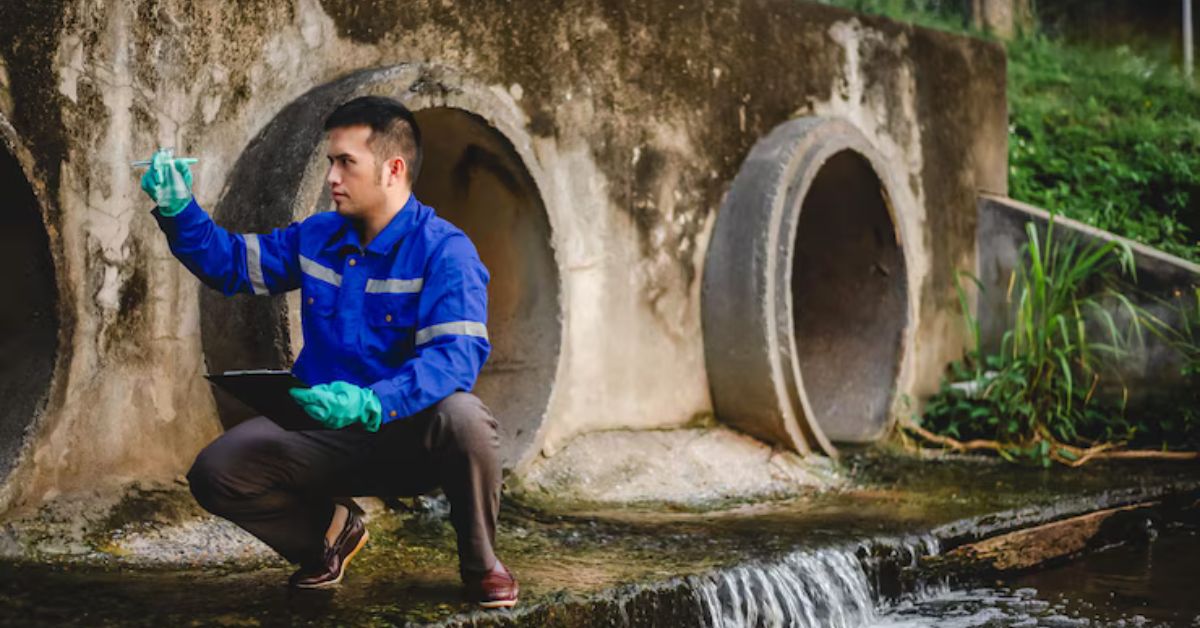Sewage is not just pipes that drain water. It’s a whole system where every element must work in harmony; otherwise, you’ll face blockages, slow drainage, or leak repairs. One of the key points that is often underestimated is choosing the right pipe diameter. Even experienced craftsmen make mistakes, believing the “standard size” will fit everything. In this article, we’ll explain how the size of the pipes affects the throughput, why typical solutions don’t always work, and whether you can fix sewer problems yourself. Let’s get started!

Why is pipe diameter important?
The diameter of a pipe determines how much wastewater it can pass through at a time. If the pipe is too narrow, you will get congestion; if it is too wide, the water will drain slowly, leaving sediment. The throughput depends not only on the size but also on the angle of inclination, the type of wastewater (toilet, kitchen, bathroom), and even the pipes’ materials. For example, the standard for a toilet is 100 mm, and 50 mm is often enough for a sink. But if you put 50 mm on the main riser, expect trouble – clogging is guaranteed.
Whether it’s a clog or a complicated pipe repair, plumbers in Gatineau https://superiorplumbing.ca/gatineau/ will keep your home comfortable and reliable. A Superior Plumbing and Heating professional will not only replace the pipes but also advise on the optimal diameter for your home, taking into account all the nuances.
Situation: client complained of constant sewage problems. It turned out that the previous installer had installed pipes of a smaller diameter than necessary because it was “cheaper.” They had to redo everything, and it cost more than the correct installation from the beginning. So, the choice of diameter is not a good place to save money.
Mistakes that you can make
Blind adherence to standards. A universal solution is 110 mm for a riser or 40 mm for a sink. However, standard pipes will not cope with the load if you have a large family or a house with several bathrooms.
Ignoring the slope. A 50 mm pipe with an irregular angle (less than 1-2 cm per meter) will not provide normal drainage – the water will stagnate.
Mixing diameters without calculation. If you connect a wide pipe to a narrow one without an adapter, the flow will slow down, and problems with pipe repair will begin.
Underestimation of the type of wastewater. A kitchen with greasy waste needs a wider pipe than a bathroom with only water and soap.
These mistakes lead to clogs, leaks, and even burst pipes, which require finding the best plumber near me to fix them. If you are concerned about an unpleasant odor from the sewage system, you should consider riser replacement, which is part of the plumbing infrastructure and ensures the proper functioning of the wastewater disposal system.
How to choose the right diameter?
To avoid guessing, here are some practical tips from my experience:
- For the toilet: at least 100 mm, preferably 110 mm, especially if the riser is long.
- For the kitchen: 50 mm for the sink, but if you have a waste shredder, take 75 mm.
- For a bath or shower: 40-50 mm, depending on the volume of water.
- Main riser: 110-160 mm if the house is multi-storey or has several drainage points.
Before choosing, calculate the number of drains you will have at the same time. For example, if you have three bathrooms and a kitchen in Gatineau, 110 mm may not be enough for the riser—take 150 mm. And always check the slope: 1-2 cm per meter is the golden rule.
Can I fix the problem myself?
If you have already encountered a problem due to the wrong pipe diameter, can you fix it yourself? The answer is yes but with nuances.
Minor adjustments. If the blockage is due to a narrow pipe, try cleaning it with a cable or chemicals (for example, products such as Mole). But this is temporary—the pipe still needs to be changed.
Replacing a section. Let’s say you have a leak due to an overloaded narrow pipe (leak repair). You’ll need wrenches, a new pipe of the right diameter, couplings, and sealant. Cut off the old section (with a metal saw), put in a new one, and connect it. This is doable if you have basic skills and an hour. This is how the kitchen drains – the main thing is to turn off the water and take your time.
Complete recycling. If the riser is too small, it’s more difficult. You need to disassemble the walls and change the pipes from the basement to the roof. Here, you can’t do without plumbers in Gatineau—you need experience and special equipment.
Independent pipe repair is possible for small areas. But if the system is old or the error is critical, it is better not to risk it. One of my friends tried to remodel the riser himself – he flooded the neighbours from below and paid three times as much for the repair.
When to call a plumber in Gatineau?
If you hear gurgling in the pipes, the water is running slowly, or cracks have appeared, this is a signal that it’s time to look for the best plumber near you. For example, some great plumbers will quickly deal with the problem in Gatineau.
How to avoid problems in the future?
- Plan the system: installing wider pipes immediately is better than redoing them later.
- Clean the sewage system regularly – once a year with a cable or hydrodynamics.
- Do not ignore the first signs: a slow drain is already a wake-up call.
Conclusion.
Choosing the right diameter of pipes for sewage is not just a technical trifle but the basis of comfort in the house. Mistakes here are costly, from blockages to leak repairs and complete rewiring. You can deal with minor breakdowns or short sections independently, but it’s better to trust plumbers in Gatineau, your best plumber near me for major changes. I’ve learned that the right approach saves time, money, and nerves. So choose wisely and let your pipes run like clockwork!







